What's New
Displaying results 2061 - 2070 of 4052
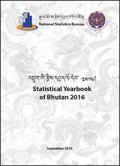
Resource | Publications,
This Statistical Yearbook of Bhutan (SYB) 2016 publication is the 34th edition. It is a comprehensive and systematic compendium of basic statistical information on the country’s socio-economic conditions.
The SYB is expected to serve as the principal source of information for planners, policy makers, researchers and academicians both within and outside Bhutan. The compilation is based on information gathered through periodic statistical censuses and surveys, as well as from administrative data maintained by various ministries, agencies, corporations and private organizations.
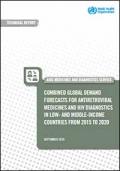
Resource | Publications,
The number of people receiving antiretroviral therapy (ART) in low- and middle-income countries continues to show promising growth, indicating that the global effort to scale up HIV treatment has exceeded 15 million people by the end of 2015. As of the end of 2015, the number of people receiving ART had reached 15.9 million in low- and middle-income countries, indicating a stable annual growth rate of 1.8 million per year since 2012.
The goal of this report is to provide countries and suppliers with estimates of the global market for antiretroviral (ARV) medicines in low- and middle-income countries for 2015–2020. The report includes estimates of the global demand for both active pharmaceutical ingredients and ARV formulations to enable suppliers to manage their manufacturing capacity accordingly.
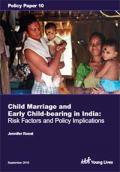
Resource | Publications,
Prevalence rates of child marriage and early child-bearing have been declining across India over the past two decades, but absolute numbers remain high. This paper uses data collected from 3,000 children over 15 years in Andhra Pradesh and Telangana by Young Lives, a longitudinal study of childhood poverty, to provide an evidence base from which to strengthen policy and programming in this area.
An ecological life-course framework is used to explore the causes of child marriage and early child-bearing and the factors which help to prevent them. Findings show that girls who stay in school for longer marry later, but gender gaps in enrolment widen during adolescence; where household resources are limited, gendered social risks become more acute and parents are forced to make decisions which disadvantage girls; aspirations matter but reflect wider realities; and social norms that encourage early child-bearing are compounded by inequitable access to health and education services.
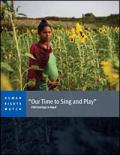
Resource | Publications,
Thirty-seven percent of girls in Nepal marry before age 18 and 10 percent are married by age 15, in spite of the fact that the minimum age of marriage under Nepali law is 20 years of age. Boys also often marry young in Nepal, though in lower numbers than girls. UNICEF data indicates that Nepal has the third highest rate of child marriage in Asia, after Bangladesh and India.
In interviewing dozens of children and young people, Human Rights Watch learned that these marriages result from a web of factors including poverty, lack of access to education, child labor, social pressures, and harmful practices. Cutting across all of these is entrenched gender inequality, and damaging social norms that make girls less valued than boys in Nepali society.
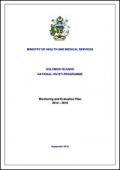
Resource | Publications,
This M&E Plan is purposed to enable the National HIV/STI Programme to work more effectively and efficiently to:
- Gather the information needed to guide the planning, coordination, and implementation of the national HIV response
- Assess the effectiveness of the HIV response
- Identify areas for programme improvement
- Ensure accountability to those providing financial resources for the HIV response.
- Provide a communication tool that outlines various roles and responsibilities regarding monitoring and evaluation for the National HIV/STI program.
- Organize plans for data collection, analysis, use, and data quality.
- Outline specific strategies and tools to encourage informed decision-making.
- Organize the numerous M&E activities that are necessary for the successful operation of a national M&E system.
- Engage stakeholders outside of the national government to ensure an integrated and harmonized M&E system.

Resource | Fact Sheets,
HIV-associated TB presents a risk to achieving the Sustainable Development Goals. Effective, sustained action is required to meet the needs of the most vulnerable populations.
United Nations Member States have committed to work towards the target of reducing deaths related to tuberculosis (TB) among people living with HIV by 75% by 2020, as well as reaching 90% of all people with TB with preventive or therapeutic treatment and achieving 90% treatment success for all people diagnosed with TB.
The commitments from Member States must be bold and ambitious and leaders of Member States must be held accountable for their actions in taking urgent steps to end two of the worlds leading infectious diseases, TB and HIV.
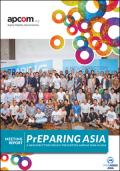
Resource | Publications,
Organized by APCOM with the support from UNAIDS and WHO, the dialogue brought in representatives of gay identified men, other men who have sex with men (MSM), sexual health policy makers, program planners and service providers and explore the potential of scaling up PrEP. Conducted in Amari Watergate, Bangkok, from 23 to 25 September 2015, the Dialogue was part of the regional rolling out of the new WHO Guidelines, which recommend PrEP as an important additional component of comprehensive HIV prevention for high risk MSM.
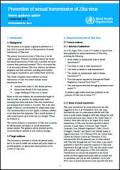
Resource | Guidelines,
This document is an update of guidance published on 7 June 2016 to provide advice on the prevention of sexual transmission of Zika virus.
The primary transmission route of Zika virus is via the Aedes mosquito. However, mounting evidence has shown that sexual transmission of Zika virus is possible and more common than previously assumed.1 This is of concern due to an association between Zika virus infection and adverse pregnancy and fetal outcomes, including microcephaly, neurological complications and Guillain-Barré syndrome.

Resource | Infographics,
PrEP works if you take it. The figures on this graphic show the relationship between PrEP efficacy and adherence and the status of regulatory action on PrEP worldwide. It also shows other potential new formulations of ARV-based prevention being evaluated as additional options in the future.
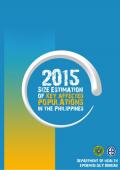
Resource | Publications,
This 2015, the Epidemiology Bureau of the Department of Health (DOH-EB), together with various partners conducted several activities with the goal of updating the size estimates of key affected populations (KAP) in the Philippines, specifically among males who have sex with males (MSM), female sex workers (FSW) and injecting drug users (IDU).
With these updated information, the DOH-EB aims to guide the national, regional, and local HIV program to set appropriate targets for the provision and monitoring of services specific for these key affected populations in different parts of the country.





